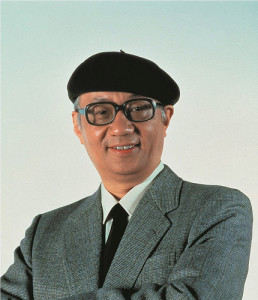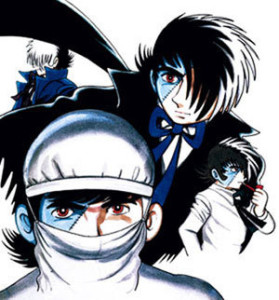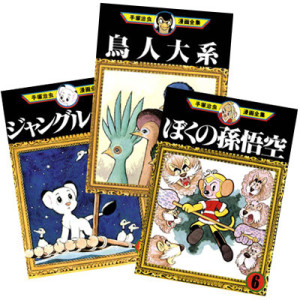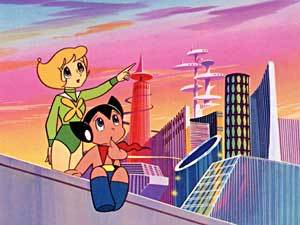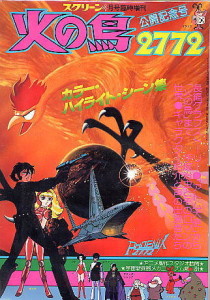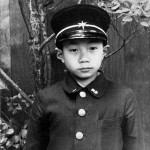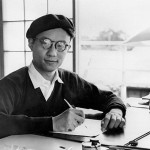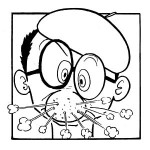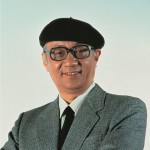Tezuka’s Life (1973-80)
By August 1973, after fumbling along for a few years without Tezuka, Mushi Productions folded with a debt of roughly ¥400 million. While reading about it the next day in the newspaper, Tezuka was quite surprised to hear that people were saying that he was finished. He had been so closely associated with Mushi Productions, that the public’s perception of its demise was Tezuka’s own professional demise. It was during this period that Akita Shoten, the publisher of the popular Weekly Shonen Champion (shūkan shōnen chanpion), decided to commission Tezuka for five weeks to write “anything he wanted”. According to noted Tezuka scholar, Natsu Onoda Power, in her book God of Comics: Osamu Tezuka and the Creation of Post-World War II Manga, “the editor, who felt sorry for Tezuka for his declining popularity, offered the commission as Tezuka’s ‘last work’ before retirement” (2009, p. 106). Originally conceived as a special commemorative project celebrating Tezuka’s (then) 30-year career as a manga artist, it was developed under the banner of “Osamu Tezuka’s One-Man Theater Production”, with the idea being to publish five independent stories that would spotlight Tezuka’s Star System and feature many of his characters. However, what Tezuka came up with, was Black Jack (1973-83).
Far from the planned farewell tour, Black Jack (1973-83) was an instant success, appealing both to his die-hard fans as well as a more general audience, and it catapulted Tezuka to one of the highest levels of popularity of his career. The short 5-week commission ended up being 5 years long, from 1973 to 1978, and produced 230 chapters – with another 13 chapters produced intermittently until 1983. Reinvigorated and refocused, Tezuka began to regularly churn out nearly 400 pages a month. Having recovered from his darkest days, the mid 1970’s were a prolific time for Tezuka, producing manga series for a variety of age groups. In July 1974 he started work on The Three-Eyed One (1974-78), a new boys adventure series focused on the discovery of ancient ruins and a lost civilization, and in 1976 he began publishing a new series for girls called Unico (1976-79). Sanrio had asked Tezuka to participate in their shōjo magazine for young girls, Lyrica (ririka), and although he’d had a vague idea of using an animal as a central character it wasn’t until he was touring Sanrio’s Los Angeles studios that he suddenly got an idea. He asked for a bit of paper to sketch it out, and struck on the name “Unico” while flying back to Japan. In 1977 he met with Kodansha to discuss their proposal to publish a complete library of nearly all his manga works. At first Tezuka was resistant, it had been tried before and failed, but Kodansha was insistent. Although Tezuka was concerned that some of his manga had not aged well, and that certain obscure volumes would not sell well, Kodansha had a plan. Instead of simply releasing his manga randomly, it would be a set released over a seven-year period in three phases of 100 volumes each. Although the 300-volume set is very comprehensive, it unfortunately does not include all his manga stories. Some of the notable exceptions include Cyrano the Hero (1953), as well as Tezuka’s take on the Walt Disney classics Pinocchio (1952) and Bambi (1951). With a release schedule of four books per month, the first three phases were completed in 1984, however, it should be noted that an additional fourth phase (with another 100 volumes) was issued in 1993, a few years after Osamu Tezuka’s death, bringing the grand total to 400 volumes.
Tezuka was active in all stages of the project, choosing the publication size and the trade dress design of black cover with a gold frame. All 300 covers were original works, drawn as if for an art exhibition, and Tezuka wrote an afterword for each volume, featuring his own personal comments on each of his past works. However, with many of the early post-war masters long gone, several of the volumes needed to be painstakingly restored, by hand, from old printed sources. Always with his audience in mind, Tezuka also took the opportunity to redraw some parts, or update certain bits of dialogue that he felt hadn’t aged well. For him these were still living works, and he saw no problem touching up, adding to and deleting from them as he saw fit. Two extreme cases of this were among the very first and last (at the time) volumes to be published – Jungle Emperor (1950-54) and New Treasure Island (1947). In the first case, much of the original artwork for Jungle Emperor (1950-54) had been lost during the production of the 1965 animated series. So Tezuka felt the best option was to redraw nearly the entire first volume – reorganizing and changing the story along the way. However, New Treasure Island (1947) offered a different challenge. For one, as his very first long-story manga published – one which had never been officially reprinted, New Treasure Island (1947) had taken on somewhat of a mythical status among his fans, and Tezuka was concerned about presenting them with the cold, harsh, crude reality of his earliest work. The second was that, given Sakai’s original edits, Tezuka never felt that the story had been truly “his”. However, as Osamu Tezuka’s well-known debut work, how could it not be included in a complete works edition? In fact, Kodansha’s early marketing campaign had touted it as including everything “from New Treasure Island to the latest work!”, so, in order to solve the problem, Tezuka did the only thing he could think of, he redrew the entire thing his way – from memory.
At the same time, always looking for new projects and eager to return to animation, Tezuka took a job as a director at Toei Animation. Although he’d planned on a colour remake of Astro Boy (1963-66), Mushi Productions’ collapse a few years earlier had meant that the copyrights were a complicated legal mess. Although he’d eventually regain them, at the time he was under pressure as he had a deadline to produce the show, so he compromised and redesigned Astro Boy slightly and changed his name to Jetter Mars. Originally broadcast from February 3 to September 15, 1977, many of the Jetter Mars (1977) were remakes of Astro Boy (1963-66) adventures. However, given the fact that it was not the original Astro Boy, and coupled with an environment of micro-management at Toei animation, Tezuka lost interest in the project after only 27 episodes. In early 1978 he returned to Los Angeles for 3 weeks as a special correspondent for a Japanese television program, and had his first real experience with his American fans. Having brought several of his animated works with him from Japan, a special screening of several of Cleopatra (1970), Dororo (1969) and the New Treasure Island (1965) TV Special, was quickly organized. Somewhat amazed by the unexpectedly warm reception in America, Tezuka felt a renewed energy to create animation, and he returned to Japan with an idea for a new experimental file – The Legend of the Forest (1987).
However, before he could start working on it, Tezuka Productions had several other animated projects to get through. First up was Tezuka’s return to the animated television movie, with One Million-year Trip: Bander Book (1979), and Undersea Super-train: Marine Express (1979). Next was the major co-production with Toho Company, Phoenix 2772 (1980) Based loosely on his Phoenix (1967-88) manga series, Phoenix 2772 (1980) was designed to be an animated feature film for the international as well as domestic markets. As such, Tezuka used as much cutting edge animation technology as possible – especially in the area of special effects. Released in March 1980, Phoenix 2772 (1980) enjoyed only limited success in Japan. However Tezuka traveled to America to promote it and it received a warmer reception there. In Tezuks’s opinion, the American people had a better grasp on what he was trying to say through his film. Evidence suggests he was right, as a special screening at the 1980 San Diego Comic Convention netted him an Inkpot Award, as well as an Animation Award at the 1st Las Vegas Film Festival, 1980. Returning to Japan, once again energized by his trip overseas, Tezuka set to work on the new colour animated version of Astro Boy (1980-81). Having successfully regained his copyrights, Tezuka felt the time was right to revisit Astro Boy (1980-81) in the way he’d initially envisioned for the Jetter Mars (1977) series. Although he was not involved directly with the work, he did provide overall guidance and direction for the new series. Astro Boy (1980-81) began a successful 52-episode run on NTV in October 1980. At about the same time, the original B&W Astro Boy (1963-69) animated series also began airing in China. When Tezuka visited China in late 1980, he was treated like a visiting dignitary, including a guided tour of the Great Wall of China. While visiting Shanghai, he was introduced to the famous Wan Brothers – known collectively as the “Walt Disney” of China. Like his earlier meeting with Walt Disney in 1964, meeting the Wan Brothers was a thrill for Tezuka. Their animated film, Princess Iron Fan (1941), a liberal adaptation of a sequence in the Chinese folk tale, Journey to the West, was an early favorite of Tezuka and it inspired much of his series Son-Goku the Monkey (1952-59).

